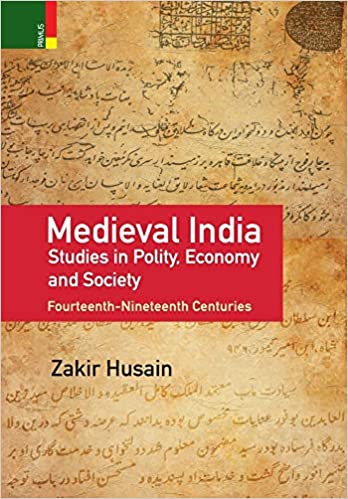Based on Persian archival material, the documents and private collections at the National Archives of India, New Delhi and several other archives in India and abroad, this volume explores the events for the period mid-fourteenth to mid-nineteenth centuries. The material that the author explores is wide ranging, from political and administrative matters to religious, environmental, ecological to warfare. The book is valuable for it outlines the significance and value of Persian sources for the study of the early modern phase of Indian History or as it was known, medieval Indian history.
The volume contains translated Persian documents with some annotations from the Sultanate or, as the author calls it, the Turko-Afghan period and the Mughal period as well as a few selected regional kingdoms and the Revolt of 1857. Largely distributed thematically, although some re-sectioning was possible, the documents are arranged in nine sections. Section I concerns the Delhi Sultans and the five diverse documents related to them to exemplify the period. Titled ‘Antecedents’, Section I comprises ‘Documents of the Tughluq Period in the Sururu’s Sudur’, ‘Some Original Tughluq Documents and Their Significance’, ‘Ilaju’t Tuyur: A Fourteenth Century Text on the Treatment of Birds’, ‘The Office of Sadarat-i Adalat under Firoz Shah Tughluq’ and ‘Facets of Agrarian Relations and Economy under Turko-Afghans in a Region of Uttar Pradesh’. Preserved in the Habibganj Collection of the Maulana Azad Library, Aligarh Muslim University, Sururu’s Sudur is a record of conversations between the mystic Shaikh Hamiduddin Nagauri and Shaikh Fariduddin Mahmud during the reign of Muhammad bin Tughluq. Six documents of the Sultan’s reign contained in this collection are translated and put as Appendix to the chapter. Ilaju’t Tuyur appears to be an invaluable text from the point of view of an environmentalist and an ornithologist. It talks about the significance of Unani medicine in the treatment of different ailments of birds. A close reading of the text, as the author tells us, reveals that Unani medicine was perhaps introduced during the Delhi Sultanate and developed with strides from the reign of the Tughluqs. Similarly, Chapter 5 of Section I on facets of agrarian relations and economy seemingly has important information on revenue assignments, revenue grants, land rights etc., in Uttar Pradesh for the period fourteenth to the sixteenth centuries. Historically relevant and interesting, yet the kind of attention or significance that these documents deserve is wanting. The scholars would have been more incentivized and inspired had the documents been put in perspective by some analysis and assessment, with a brief commentary on how the study of these sources could contribute to the enrichment or advancement of knowledge of the period.

